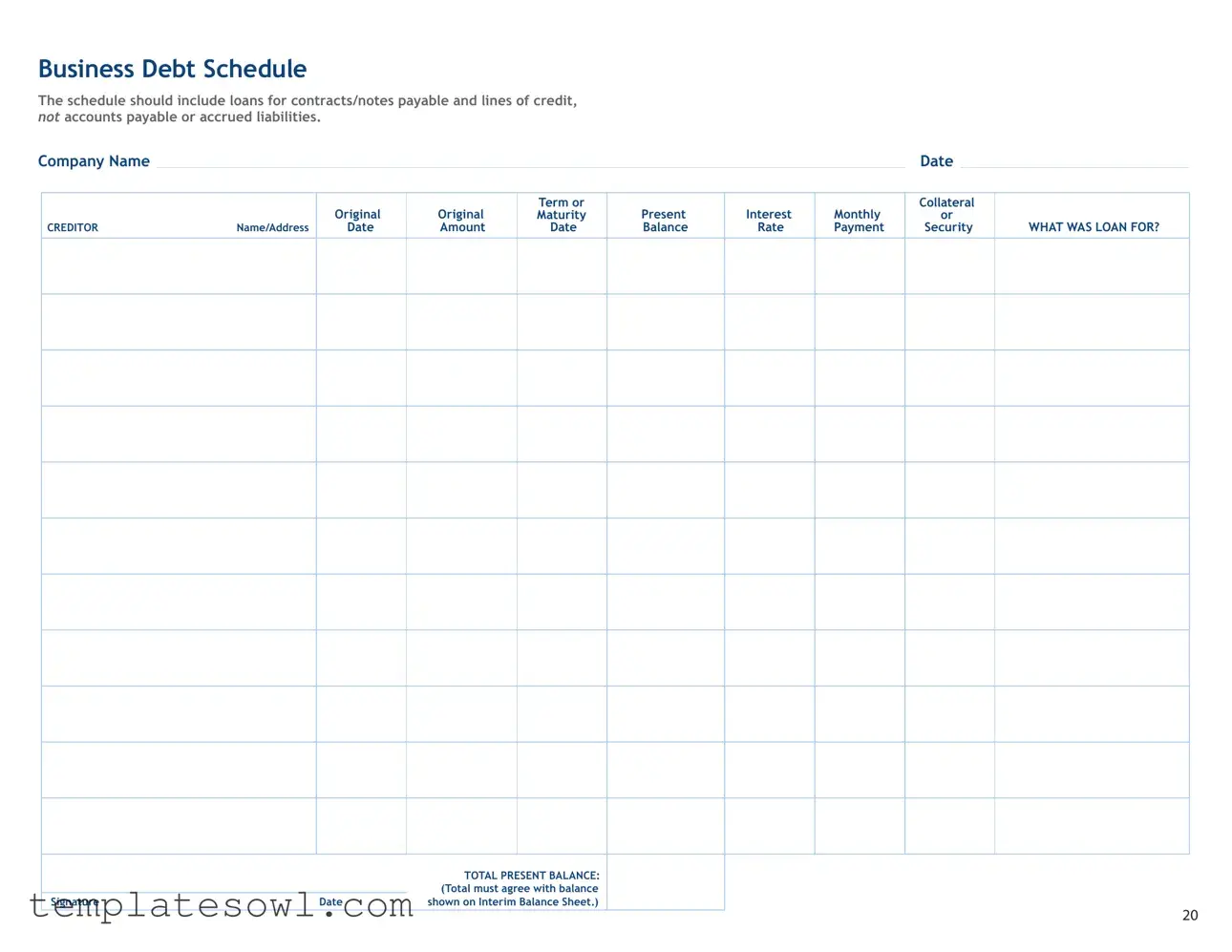What is a Business Debt Schedule form?
The Business Debt Schedule form is an essential document used to list out all the outstanding debts of a business, including loans, lines of credit, and contracts. It helps in summarizing a company's financial obligations and provides a clear picture of what is owed to various creditors.
What information is required on the form?
The form requires details such as the company name, date of the report, creditor's name and address, original loan amount, term or maturity date, present balance, interest rate, monthly payment, collateral or security, and the purpose of the loan.
Why is it important to specify what the loan was for?
Specifying the purpose of the loan provides transparency and context for the debt incurred. It helps stakeholders understand the business's financial decisions and how the borrowed funds contribute to its operations or growth.
What debts should not be included in the Business Debt Schedule?
Accounts payable and accrued liabilities should not be included in this schedule. The focus is strictly on loans, contracts, notes payable, and lines of credit to ensure accurate representation of long-term financial obligations.
How do I calculate the total present balance?
The total present balance is calculated by adding up all outstanding balances from individual loans and credit lines listed in the schedule. Make sure this total matches the balance shown on the Interim Balance Sheet.
Is there a specific format for the Business Debt Schedule?
While there may not be a mandated format, it’s crucial to present the information clearly. Each debt entry should follow a structured layout that includes all required fields, making it easy to read and understand for anyone reviewing the document.
Do I need to sign the Business Debt Schedule?
A signature is typically required to validate the information provided. Signing confirms that the details are accurate and that you take responsibility for the entries made in the schedule.
How often should I update the Business Debt Schedule?
It is recommended to update the Business Debt Schedule regularly, ideally every quarter or whenever there are significant changes in your debts. Keeping the information current is vital for effective financial management and reporting.
Can I use this form for personal debts as well?
This form is specifically designed for business debts and should not be used for personal debts. If you need to document personal debts, consider using a separate and appropriate form tailored for individual financial obligations.

